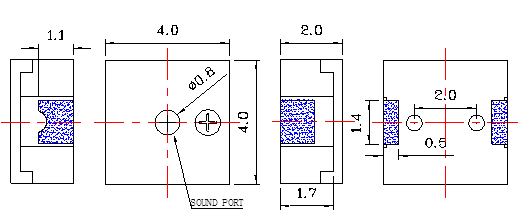What does a magnetic transducer buzzer do?
 Aug 19, 2024|
Aug 19, 2024| View:53
View:53Function of a Magnetic Transducer Buzzer
Sound Generation: The primary function of a magnetic transducer buzzer is to generate sound. It does this by converting electrical energy into mechanical vibrations, which in turn produce audible sound.
Alerting and Signaling: Buzzers are used in numerous applications where it is necessary to alert users to certain conditions or events. This includes alarms, timers, doorbells, intercoms, and many other devices.
Feedback Mechanism: In some electronic devices, buzzers provide a form of user feedback. For example, in a washing machine, a buzzer might sound to indicate the end of a cycle.
Accessibility: Buzzers are often used in devices designed for individuals with visual impairments, serving as an audible indicator for various functions.
Industrial Applications: In industrial settings, buzzers can be used to signal machine status, alert workers to potential hazards, or indicate the completion of a process.

Components of a Magnetic Transducer Buzzer
Diode: Often used to half-wave rectify the AC input, converting it to a pulsating DC signal.
Magnet: Provides a magnetic field that interacts with the coil.
Coil: An electromagnet that, when energized, moves against the magnetic field of the permanent magnet.
Dome: A diaphragm that vibrates to produce sound when the coil moves.
Contact: A small metal piece that can make or break contact with a circuit, often used to control the sound output.
Operation of a Magnetic Transducer Buzzer
Electrical Input: When an electrical signal is applied to the buzzer, it energizes the coil.
Magnetic Interaction: The energized coil creates a magnetic field that interacts with the permanent magnet's field.
Mechanical Movement: The interaction causes the coil to move back and forth, which in turn causes the attached dome to vibrate.
Sound Production: The vibration of the dome produces sound waves that we can hear.
Frequency and Tone: The frequency of the electrical signal determines the pitch of the sound. The design of the dome and the materials used can affect the tone quality.
magnetic transducer buzzer Applications
Consumer Electronics: Used in computers, smartphones, and other devices for notifications and alerts.
Automotive: Buzzers in cars can signal turn indicators, seatbelt reminders, or other warnings.
Home Appliances: Found in appliances like microwaves, washing machines, and ovens to indicate completion of cycles or errors.
Industrial Equipment: Used in machinery for operational alerts or safety warnings.
Medical Devices: In medical equipment for alarms or patient notifications.
Security Systems: For doorbell chimes and security alerts.

magnetic transducer buzzer Advantages
Reliability: Electromechanical devices like buzzers are known for their reliability and durability.
Low Cost: They are relatively inexpensive compared to other sound-producing technologies.
Versatility: Can be used in a wide range of applications due to their simple design and functionality.
Customizable: The sound can be tailored to some extent by adjusting the electrical signal or the physical components.
magnetic transducer buzzer Limitations
Size: Can be larger than other sound-producing technologies, which may be a constraint in compact devices.
Power Consumption: May consume more power than some electronic alternatives.
Noise Level: The sound level may not be suitable for all environments or may be too loud for some applications.





